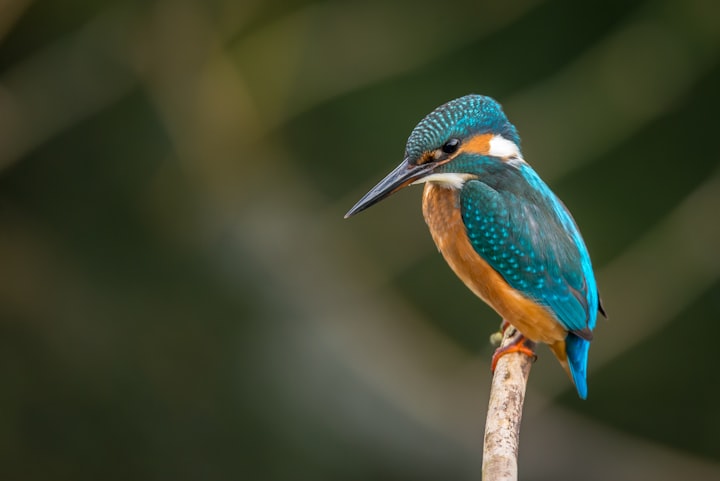
They are incubated by one or both parents for a certain period of time until the embryos develop into hatching chicks. When the baby bird hatches, it goes through several stages until it reaches full maturity. The number of eggs that female birds lay can range from 1 in condors to 17 in partridges.
Emperor penguins that breed in the middle of the Antarctic ice cap where temperatures can drop as low as -40 ° C are the only bird species that lay their eggs in the snow. The hard bony structure that surrounds the baby bird's beak is known as the egg tooth. The egg is hatched by a parent bird and the incipient embryo forms into a chick.
Other birds are abandoning the conventions of house-building and parenting and resorting to cunning to raise their families. These are breeding parasites, birds that never build their own nest and lay their eggs in the nest of another species so that they take care of their young alone. These birds find it worthwhile to deceive their partners when they try to gain an advantage over other birds of their species and ensure that their chicks grow up and continue the line.
About 90 percent of bird species form parent pairs at least once in a given breeding season, a much higher number than other creatures, and the more deception, the more suspicious. Birds are regarded as exemplary examples of fidelity, which, depending on the situation, surrender to the slingshot.
Birds "life expectancy varies among ornithologists, and there is no conclusive data to predict how long a bird will live, but understanding the factors that affect birds" life expectancy is the first step any ornithologist can take to help a bird live a healthy life. The care of birds in zoos, aviaries, or as pets can survive wild birds for many years. Not all bird species are adapted to captive conditions, and some species have a shorter lifespan due to stress in captivity or improper care.
Birds make amazing pets, but one factor to consider before taking one home is the average lifespan of pets. Pet birds with short lifespan Small birds tend to live a shorter lifespan than other common pet birds. Smaller birds can live only 10 years or longer while larger birds can live up to 50 years, meaning that you need to have a plan for their care if something happens to you.
The lifespan of birds has increased due to the simple fact that they do not have to take so many risks, which is great. This means that birds such as budgies and cockatiels generally have a shorter lifespan, but other species of large parrots such as macaws can live in captivity for up to 100 years under optimum conditions.
Our knowledge of the lifespan of birds in the wild comes from the banding of birds. The practice of banding aging birds is more complicated than it appears. In many cases, the simple question of how old a bird is is almost impossible to answer.
By learning some basic facts about how birds age we can gain some interesting insights into the lifespan of birds and begin to understand why familiar species around us tend to live long and short lives. The wisdom of the 69-year-old Laysan albatross, who holds the record for the oldest known wild bird.
In fishing stories, bird lovers often exaggerate how long their birds live. If you google "long-lived birds," you will find several claims that birds have lived for over 100 years. These claims depend on what is known about when the bird hatched and on the fact that we do not have birds born in the wild.
Birds are beautiful to look at, and many species have remarkable skills in song and language. There are countless species, but over 1,000 bird species are extinct and can only be preserved through fossils.
Birds can become stressed and engage in behaviors such as shouting and feather-pecking to compensate for their fear and boredom. Since most companion birds are not domesticated, they are not adapted to constant physical contact such as long stroking and caressing, or may be carried on a person's shoulder or lap for long periods of time. This promotes inappropriate hormonal behavior in birds, leading to undesirable behaviors and activities such as belching, self-stimulation, aggression, and excessive egg-laying.
This can affect their life chances for a long time because the stress affects their immune system. Most birds have a small bump at the tip of the beak, called an egg tooth, which helps them hatch. A chick works for hours a day to break the shell out of its egg.
Pay attention to the behavior of birds, but it does not have to be tail bobbing, tail feathers moving, or pumping (breathing). Adult birds are normally alert around humans, but even healthy baby birds can fall asleep during some activities. Adult birds that keep their eyes open when people are in the room should be avoided as this might indicate illness.
In this article, you will learn in detail about the life cycle of a bird and its stages in the life cycle. This episode, which first aired on December 9, 1998, examines how long birds take to ensure their chicks are born safely.
Birds begin life in an egg that consists largely of a white or yellow shell covering a fully developed bird or an undeveloped embryo. The number of eggs laid and the size of the eggs differ from species to species.
About the Creator
Radha Karki
I am very curious ar learning new things, love to read books, paintings, art, and love singing too.





Comments
There are no comments for this story
Be the first to respond and start the conversation.